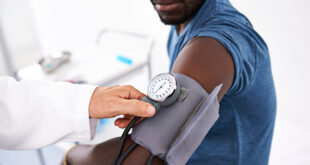…What you should do instead!

If you’ve ever had a urinary tract infection, you know they are their own special kind of hell. And considering one in five women gets a UTI at least once in her life, according to the National Kidney Foundation, chances are your ticket will get punched if it hasn’t already. An infection happens when bacteria sneak into your bladder through your urethra (what your pee comes out of) and multiply, causing the lining of your urinary tract to swell up. This leads to symptoms like frequent urges to urinate, a burning sensation while you pee, pelvic pain, and more.
That’s why “it’s important to avoid certain activities, to give the area time to heal, flush out bacteria, and not worsen symptoms or cause irritation to the vaginal area,” says Bilal Chugtai, M.D., urologist at Weill Cornell Medicine and New York Presbyterian. So, to help keep your bathroom from turning into an all-out torture chamber, here’s a roundup of the poorest decisions you could possibly make when you have a UTI … and what you should do instead.

When UTI symptoms rear their ugly head, trying to treat them yourself will only give the infection more time to spread. The more you delay getting medical attention, the more you’re putting yourself at risk for serious health complications.
“Waiting too long to start treatment can allow the infection to progress from a simple bladder infection treated with three days of oral antibiotics to a complex kidney infection requiring intravenous antibiotics,” says Ekene Enemchukwu, M.D., assistant professor of urology at Stanford University School of Medicine. “Failing to see your healthcare provider could also result in the delayed diagnosis of a more serious condition. UTI-like symptoms in the absence of bacteria can be caused by other conditions, such as vaginal infections, STDs, kidney stones, severe constipation, and vaginal atrophy.”
Do: Play It Safe
It’s always better to err on the side of caution. Rather than trying the wait-and-see method, make an appointment with your doctor as soon as you notice any telltale signs of a UTI. And remember: Over-the-counter meds like AZO might mask the pain, but they won’t oust the bacteria like antibiotics do.

When your doc tells you to take an antibioticfor three, seven or 10 days, he’s not just pulling numbers out of a hat. Various studies are done to determine exactly how long each antibiotic needs to be in your system in order to fully eliminate infection. So, while it’s very likely that you’ll start to feel better after one or two days of taking your meds, that doesn’t mean the antibiotics have finished their job. If you stop your treatment too soon, you’re only building the bacteria’s defenses against the meds, rendering the antibiotics useless—and digging yourself into a deeper hole.
“Survivor bacteria that have been exposed to a short course of antibiotics will evolve to resist that antibiotic,” says David Kaufman, M.D., of Central Park Urology in New York City. That means the infection will no longer respond to the medication, making it much tougher to get rid of the UTI.
Do: Take Your Meds As Prescribed
It’s fun to be rebellious sometimes, but this ain’t the time to do it. The rule here is simple: If your doctor tells you to take your antibiotics for 10 days, then just take them for 10 days. Have a habit of forgetting to pop the pill? Set an alarm on your phone. “If symptoms persist after you complete your antibiotics, you should be re-evaluated by your healthcare provider,” says Enemchukwu.

Those dreadful bathroom visits may make you think twice about chugging a glass of water, but depriving your body of H20 sets up a cozy internal environment where the infection can really hunker down.
“Water is essential for all bodily functions,” says Carolyn DeLucia, M.D., of VSPOT Medi SPA. “If we are dehydrated, then the bacteria can fester in the bladder. When we are well-hydrated, we urinate regularly, and the water cleans the walls [of the urinary tract] easily. It’s like cleaning out a glass that you had tomato juice in. If you just try to wipe off the glass without water, you can’t be sure you cleaned off all the sides.”
Not drinking enough water can also prevent your medication from getting where it needs to go: “Antibiotics have to have good penetration into the kidneys and bladder,” says Vandana Bhide, M.D., board-certified internist and pediatrician at the Mayo Clinic. “Drinking a lot of water will help deliver the antibiotic to the urinary tract. It also flushes the kidneys and bladder, and it prevents dehydration and kidney stones.”
Do: Keep That Water Bottle Handy
According to DeLucia, the gold standard is to drink half of your weight in ounces each day. So if you weigh 120 pounds, you should aim to gulp down 60 ounces of agua daily. Keep in mind that water will also help dilute the toxins in your urinary tract and give you symptom relief, but it won’t cure your infection. We can’t stress this enough: The only way to fully squash your condition is to take all your prescribed meds.

Just because you should be drinking more water doesn’t mean it’s a good idea to gorge on any liquid bev. Doctors highly suggest avoiding foods and drinks that are known to rub the bladder the wrong way, including coffee, alcohol, caffeinated sodas, acidic fruits, spicy foods, and artificial sweeteners.
That said, don’t flip your lid if you accidentally partake in a tricky treat: “Exposing yourself to these irritants in the midst of a UTI isn’t particularly harmful or dangerous,” says Kaufman. “It just makes you feel worse, like putting salt in a wound.”
Do: Opt for Sugar-Free Cranberry Juice Instead
If you have to have something flavored, reach for a glass of 100-percent natural cranberry juice (so, not the cocktail variety). “Consider cranberry supplements [in conjunction with antibiotics],” says Alyssa Dweck, M.D., gynecologist and assistant clinical professor at CareMount Medical. “An ingredient in cranberry can make the bladder more slippery so bacteria can’t adhere.”

Running to the little girls’ room every five seconds isn’t exactly fun or convenient, especially if the thought of public bathrooms makes you cringe. But if you have the urge to go and hold it in instead, you could be setting up your urinary tract for some major issues. When you retain your urine, you’re also hanging on to all those germs that are floating around in your bladder—the opposite of what you should do if you’re hoping for a quick recovery.
“Emptying out the bladder flushes out the bacteria that’s been introduced there,” says Bhide. “Many women are so busy during the day that they don’t have time to urinate. This can increase the risk of UTIs [and make your symptoms worse if you already have one].”
Do: Take Bathroom Breaks As Needed
This holds true whether you have a UTI or not: If you gotta go, go. You don’t have to spend the whole day on the john, but make sure you’re not forcing yourself to hold your flow. And when the time comes to do your biz, remember to wipe from front to back.
“It’s recommended for women so that bacteria from the anus and colon are not introduced to the bladder through the urethra,” says Bhide. “The urethra is a lot shorter in women than in men, so that’s why women tend to get bladder infections more commonly than men.” Experts also recommend peeing before and after sex so you can sweep away any bacteria that might have snuck up there while you were doing the deed.

Speaking of sex, doing it while you have a UTI isn’t exactly advised. “Most women with symptomatic UTIs avoid sexual activity because it’s too uncomfortable,” says Enemchukwu. “It can also theoretically push bacteria from the vagina back into the bladder, causing a new infection. It’s generally best to refrain from sexual activity during an active infection to allow the inflammation to resolve.”
Do: Proceed With Caution
While doctors suggest waiting until the infection has cleared and your symptoms are gone, that’s not to say that you’re completely banned from gettin’ it on. “I usually allow the patient to decide when she is ready for sex,” says Kaufman. “It’s typically not a big problem once she starts antibiotic treatment.” So if you two can’t keep your hands off each other, go ahead and give it a try. If the friction of intercourse is too much, stop. If not, then you’re in the clear. (Check out these fun lube options from the Women’s Health Boutique.)
Source: WomensHealthMag
 Quelins – Relationship, Sex, Marriage and Health News around the world Quelins Blog is an online magazine about relationships, love, information about marriage, partnerships and issues patterning to all that.
Quelins – Relationship, Sex, Marriage and Health News around the world Quelins Blog is an online magazine about relationships, love, information about marriage, partnerships and issues patterning to all that.



